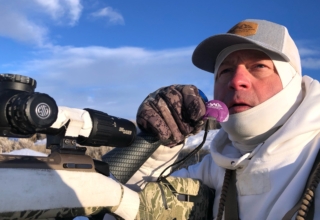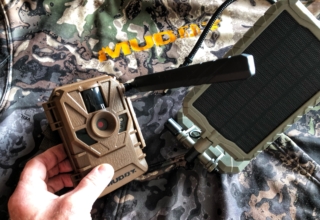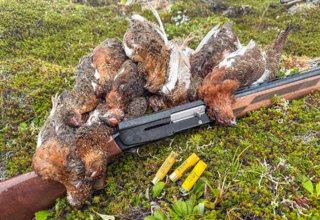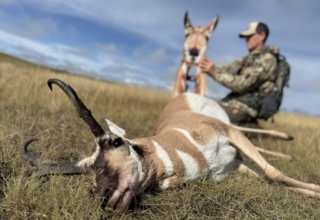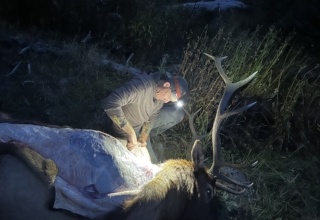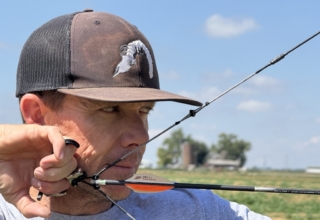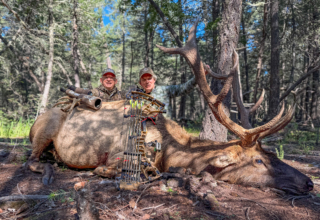Winter still lingers, and if you’re tired of sitting in the recliner and are looking for a hunt opportunity, consider hitting the woods and striking up a coyote conversation.
by Mark Kayser
In my early years of predator hunting, February marked the end of fur chasing. Breeding season was in play, and coyote hides began to degrade quickly. Until recently, in predator hunting history, the value of coyote pelts meant pursuing them from fall into mid-winter. Decreasing daylight hours triggers coyotes to grow a heavier coat as it does in many species. By February, breeding activity, scratching from lice and fleas, plus the increasing amount of daylight that spurs shedding, causes pelt quality to deteriorate. A coyote may even be sporting a bullet burn from your miss (I have two out there this winter). With no value, most predator hunters and trappers closed shop until the following fall.

As fur markets struggle in a modern world more interested in petroleum-based clothing over renewable sources, coyote pelt prices plunged. Many, like me, now hunt coyotes whenever the whim arises. February stands out as a month when few hunting pursuits still exist. Spring turkey is a month or more out, as is full-blown shed hunting season. Why not hunt coyotes?
February presents a series of pros and cons. First, the cons. Coyotes have seen it all. If you live in a heavily hunted section of the country, coyotes have passed a SERE (survival, evasion, resistance, and escape) course long ago. Plus, as in any wildlife dynamic, the longer a species is hunted during a season, the fewer that remain alive until pups arrive again.
The pro column has one biggie. Coyote breeding season is still in effect. As coyotes pair up and establish territorial denning areas, they move about more, show curiosity, and display aggression. These behavior characteristics give you an opening to dupe coyotes differently. Instead of the standard prey-in-distress setup, you can ditch the dying rabbit and transition exclusively to coyote vocalizations. Do you know how to talk coyote?
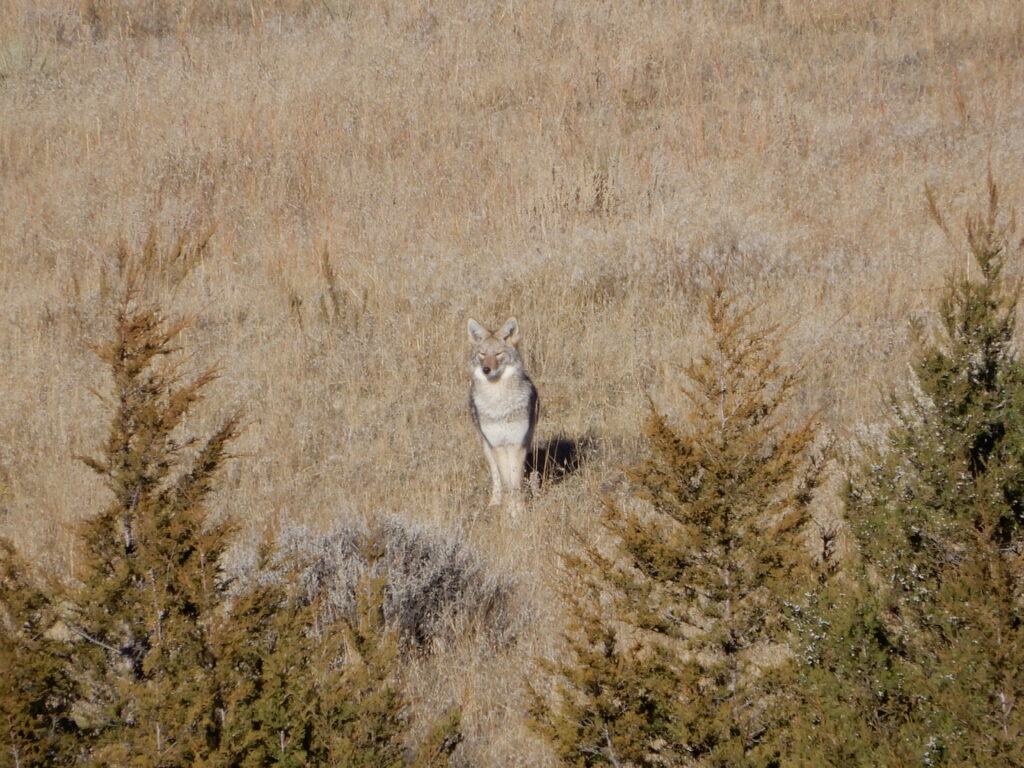
Sure, you might be familiar with the various icons on your electronic caller, including group howls, female howls, pup frenzy, and the like, but do you know the conversations that could make a difference throughout February and even into March?
Like the dog in your backyard, coyotes have a range of vocalizations that vary from friendly to threatening. During breeding season and into denning, coyotes still respond to the most basic of howls. If vocalizing to coyotes with an intricate conversation intimidates you, think simple. Instead of trying to communicate with a long, drawn out series of sounds, keep yourself in the game with howls.
The lone howl serenade particularly has merit if you feel coyotes have been pressured extensively. Coyotes still use this brief introduction to announce their presence, proclaim territory, and seek out a mate if they do not have one yet. Simple is safe and typically does not arouse coyote suspicion. If you do get a response, keep with the simplicity theme. Mimic what they say, and if the coyote ramps its tone, match it yip for yap.
That is one element of advice I follow with devotedness. On numerous outings, I have conversed with coyotes that suddenly changed the tone of their response. I mimicked it, and on occasion, it sparked a showing. A higher pitch and questioning nature added to a howl imitates female or adolescent coyotes, thus deterring some angst for a coyote not looking for confrontation but for February love.
Speaking of love, if you are looking for a new sound, practice the love language of coyotes. In short, talk slutty. You will not find the slut icon on your electronic caller, but look for sounds titled estrus yips, female whines, and female chirps, to name a few. In breeding season, females incorporate high-pitched yips and whines into their vocabulary to advertise their willingness to males. Estrus yips are short, simple, and high-pitched. Three or four after a short howl series advertise that a female is in the area, exciting male coyotes. Follow this with an estrus whine. Forget the fancy definition and imitate the whining your puppy makes when it sees you grab the leash from a hook, indicating a walk or tennis ball session is about to begin.
Give the intensity of the sound and signal your sultry side. Making a few fighting sounds that imitate the aggressive nature of breeding at times is also an excellent tactic. Wait for up to 15 minutes, and if that does not do the trick, you can always end your setup with another howl volley for a long-range invite.
Depending on your aggressiveness with your conversation, you could land yourself into a yip-off with a coyote pair. This challenge is common for pairs once they settle into a territory. Plus, if you mimic their response, it is an excellent way to force the hand of a wary coyote and make it show itself. Simply put, irritate them beyond their ability to ignore you, and they may just lope over to kick your butt.
Again, return the message note for note. If a coyote subtly yips back, mirror that response. If the dog goes into full-blown challenge howls, snap it back in their face and follow it with a bark. Many electronic callers have the challenge howl preloaded on machines. This is also the time of year I pare back my equipment and go light. Instead of toting an electronic caller monstrosity, I tote a mouth howler. I prefer the Rocky Mountain Hunting Calls Stealth Yote Howler that operates with a diaphragm and includes the innovative V.E.T.T. mouthpiece to create realistic, deep, throaty coyote sounds.
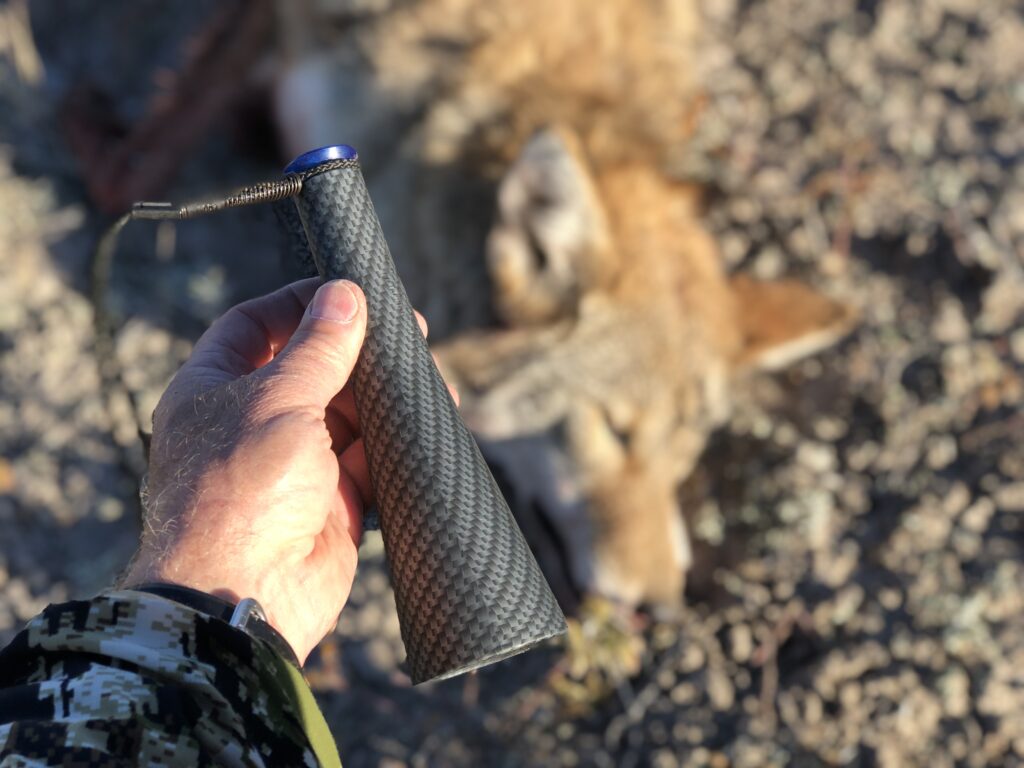
For those with diaphragm gagging issues, consider the Stealth Parvo, which uses an open-ended concept for coyote sounds. Both give you a range of opportunities to create the sounds described above.
Another addition to your setup is using a coyote decoy to embolden a coyote that may harbor suspicions from bad experiences. Coyote decoys range from taxidermy mounts to full-sized 3D models requiring sweat equity to take to the field, like the Flambeau Master Series Lone Howler.
To avoid toting bulky decoys, consider folding models like those from Montana Decoy Company. These lightweight, compact and realistic decoys can be easily packed in and deployed easily. The trouble-free decoys use high-definition images of coyotes, and my Sitting Coyote Decoy goes with me everywhere, even when I have my decoy dog along.

Bolster confidence further with a few spritzes of coyote urine around the decoy and upwind of you between the decoy and your hideout. This causes a coyote to stop, sniff, and gives you ample time to launch a V-Max on the distracted dog.
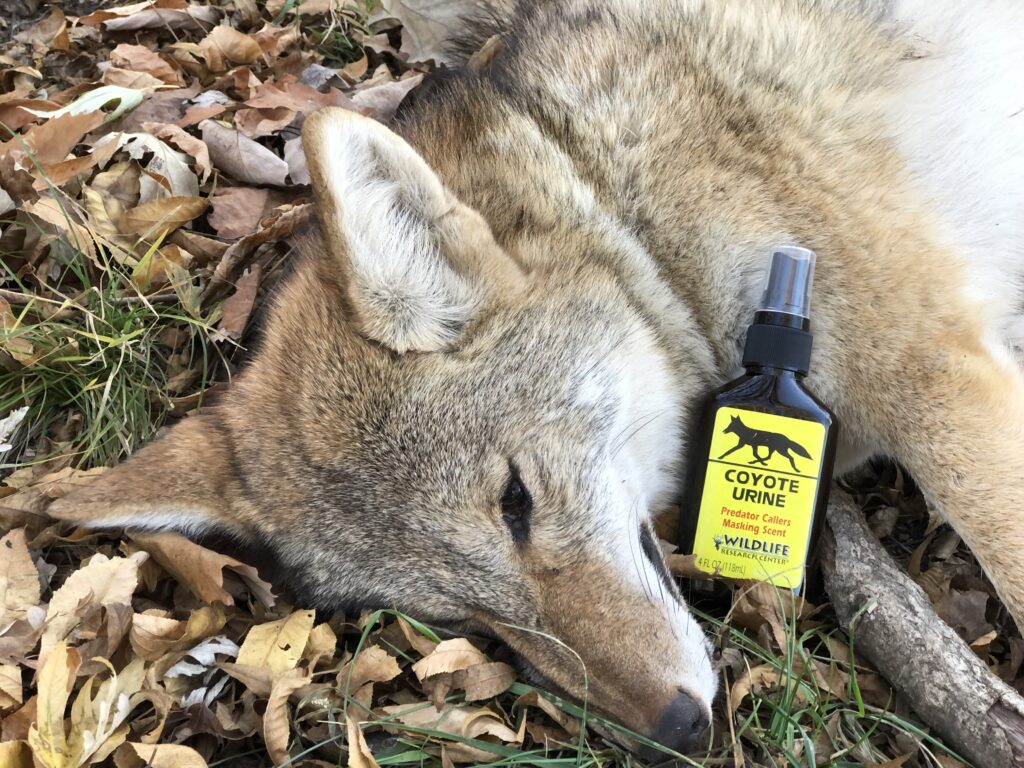
Conversing with coyotes may seem as foreign as conversing with your first extraterrestrial (unless you already were beamed up), but you really cannot go wrong. Simple howls can pave the way, and when a coyote changes the dialogue, copycat until one of you grows tired of the long-distant relationship.


